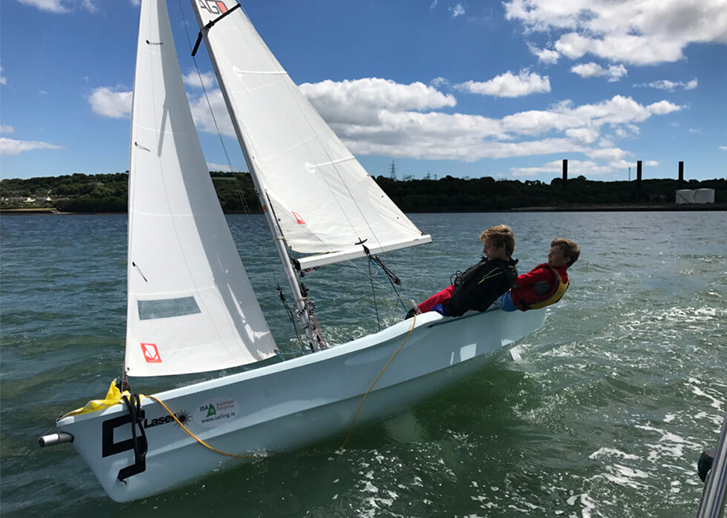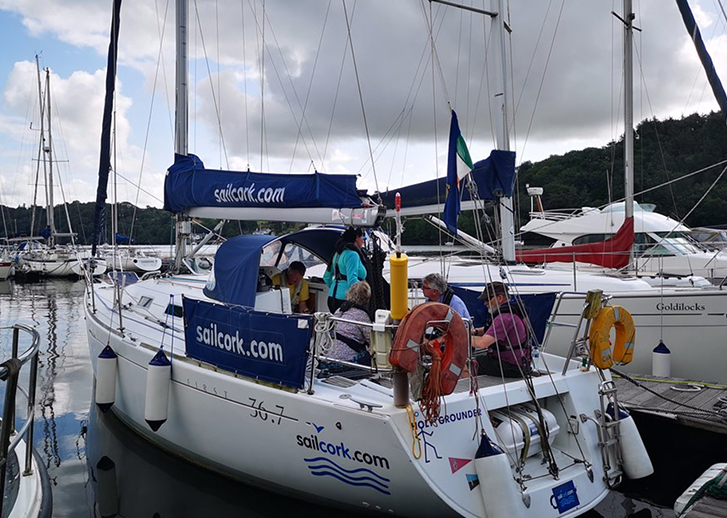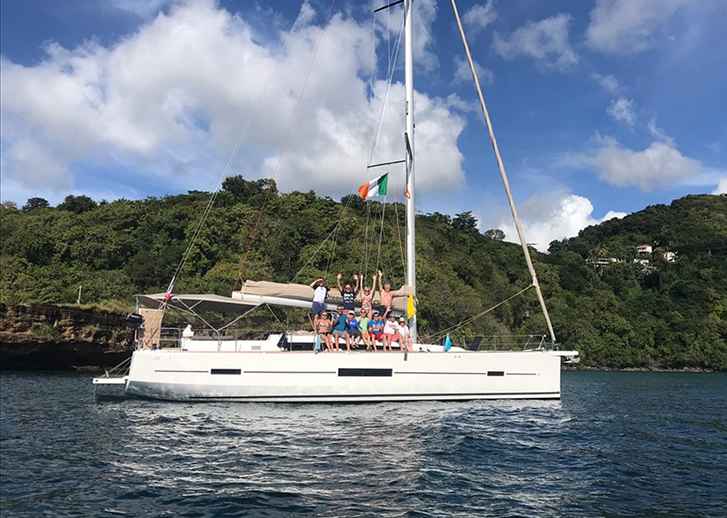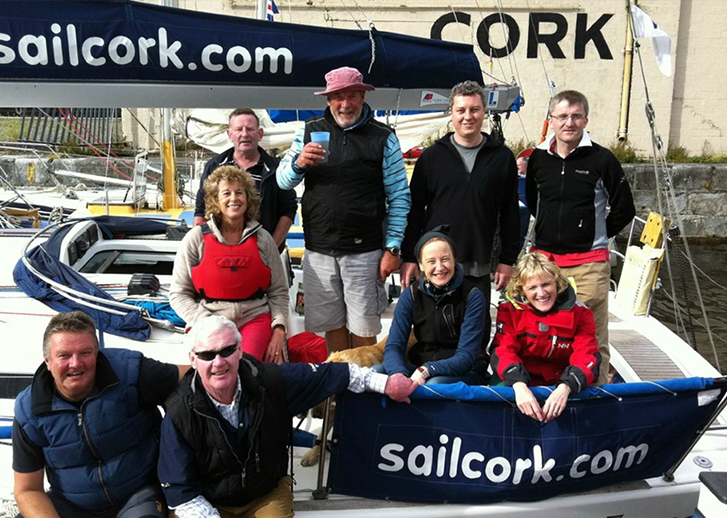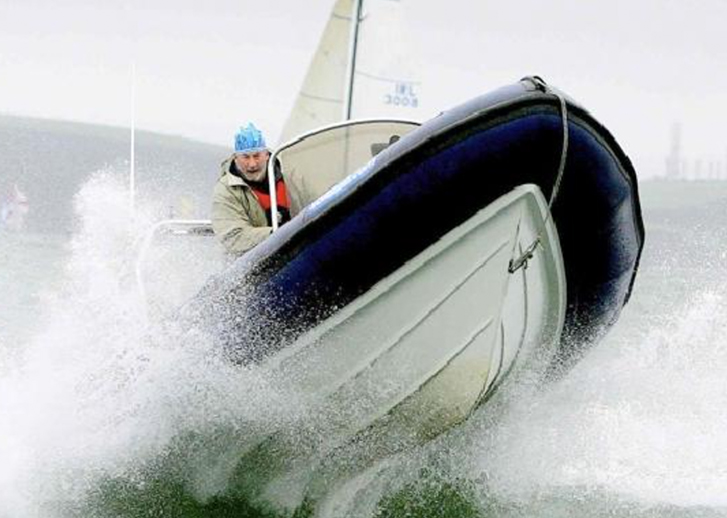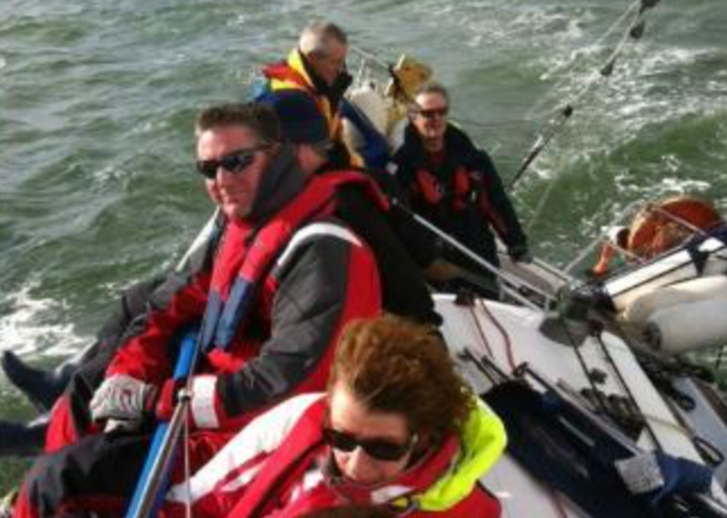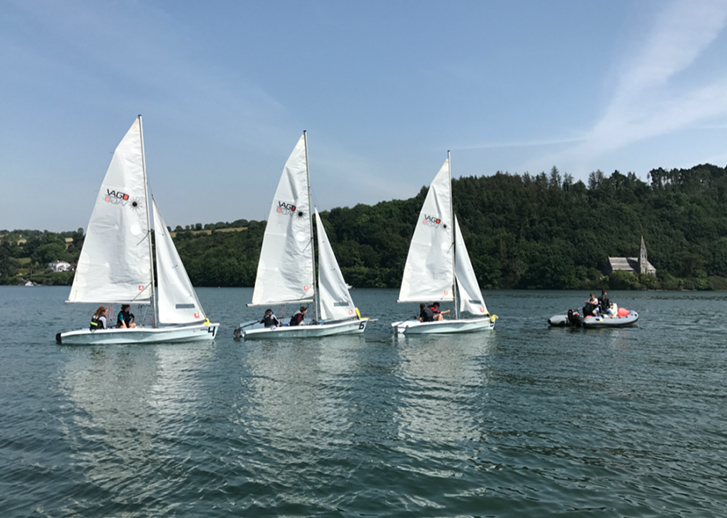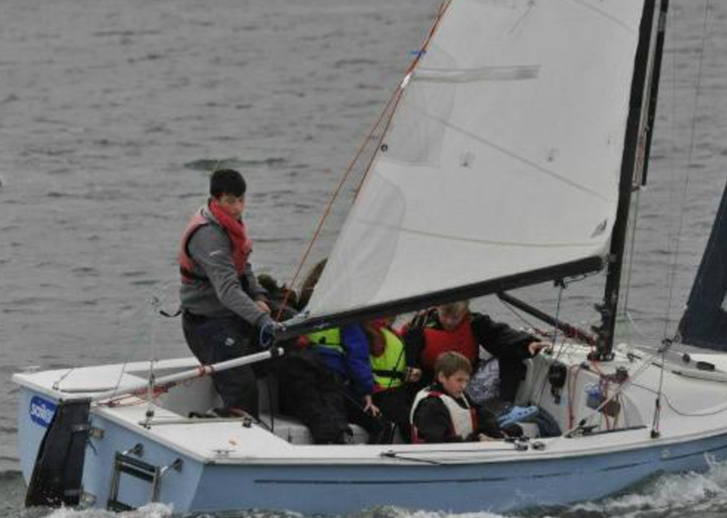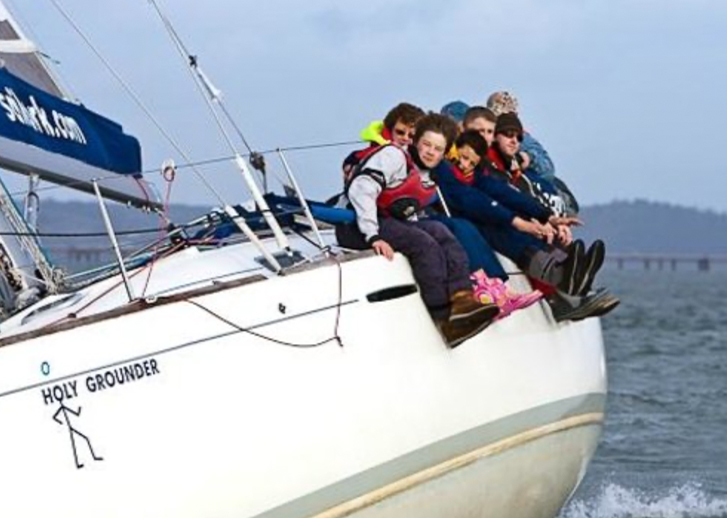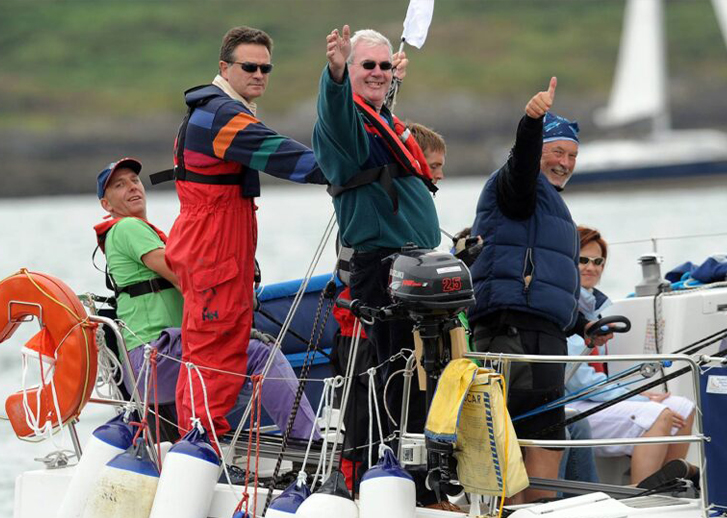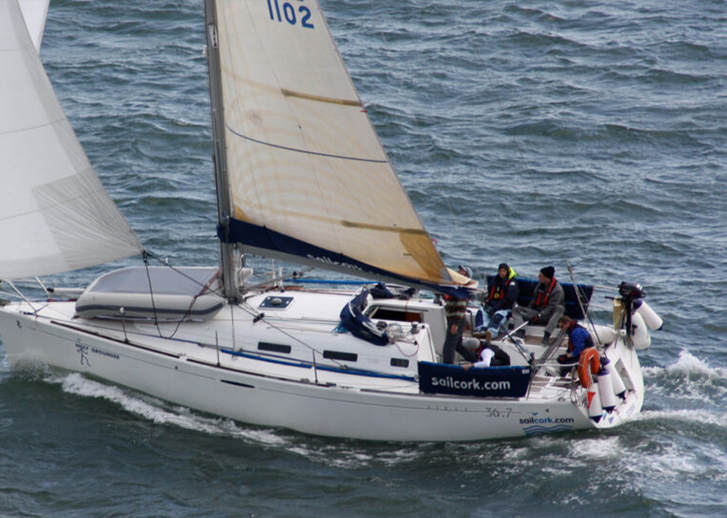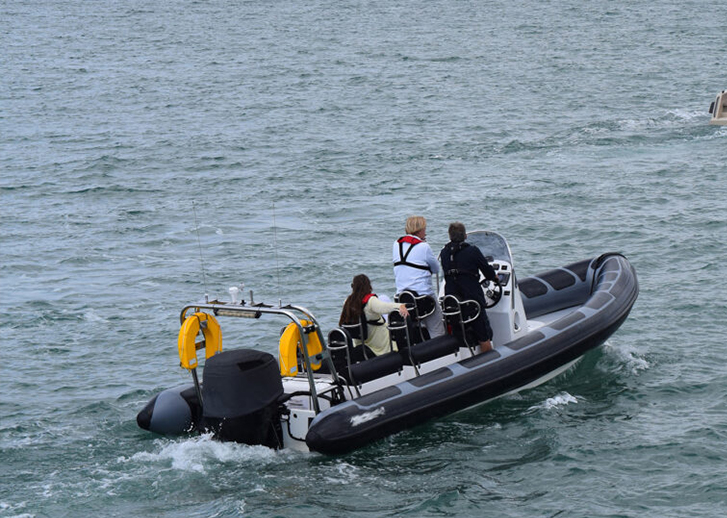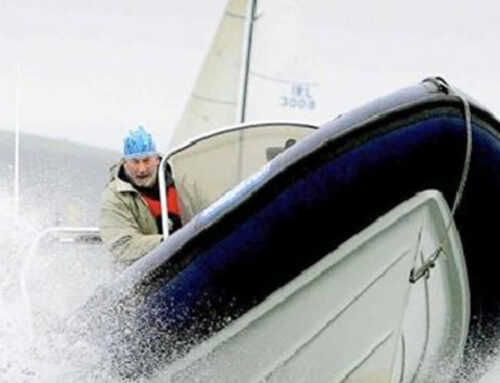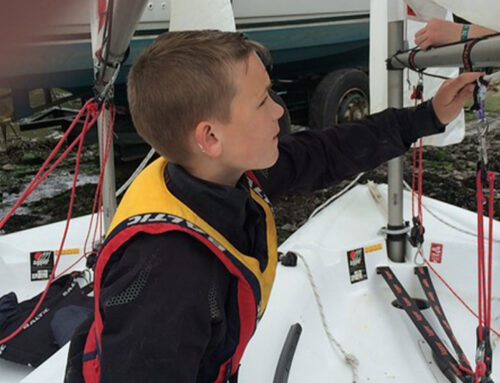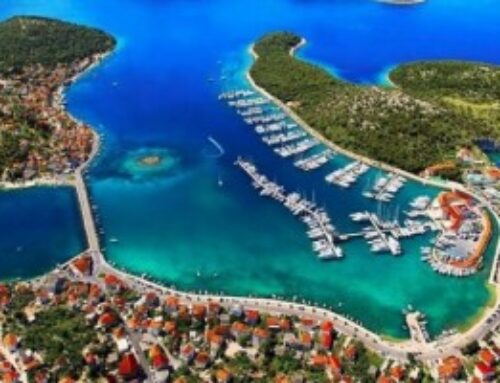Just a year ago this month Ireland’s last lightship was withdrawn from service at South Rock off Co. Down. Whereas there were no lightships off the north coast or the west coast and only 3 on the south coast there were up to nine lightships stationed off our east coast. In this blog we look at the history of lightships in Ireland from 1735 when the first ship went on station at the entrance to Dublin as a "light float"

 The idea of a floating light or “lightship” was first mooted in the 1600’s but it was not until 1732 that the world’s first lightship went on station at the entrance to the Nore in England. She was a blunt bowed wooden vessel with candlelit lanterns suspended on each end of a yardarm on a single mast. Three years later a similar ship was placed at the entrance to the Liffey – Ireland’s first lightship. Lightships were to serve the mariner on the Irish coast for 264 years until the last vessel was withdrawn from its station at South Rock in Co. Down in February 2009.
The idea of a floating light or “lightship” was first mooted in the 1600’s but it was not until 1732 that the world’s first lightship went on station at the entrance to the Nore in England. She was a blunt bowed wooden vessel with candlelit lanterns suspended on each end of a yardarm on a single mast. Three years later a similar ship was placed at the entrance to the Liffey – Ireland’s first lightship. Lightships were to serve the mariner on the Irish coast for 264 years until the last vessel was withdrawn from its station at South Rock in Co. Down in February 2009.There are no conventional lightships left operating anywhere in the world but a multi purpose vessel is nearing completion for service in the Caspian. In the early 1900s there were more than 750 lightships worldwide, employing around 10,000 crew members. In the 1920s Ireland had ten lightships on station, with 3 spare vessels, crewed by around 90 lightshipmen. Life on board ship was a tedious unending routine. They had their daily tasks and many had plenty of time for special hobbies – I remember visiting the “Daunt” lightship off Cork Harbour and getting a present from a lightshipman of a money box made like a table with a special secret door.
 We loved our visits to the Daunt and always brought the newspapers to pass to the Daunt when we went fishing off the harbour. When we used lightships as racing marks in the 1970’s we always got a great reception from the crew as we rounded –especially if there were any “Holygrounders” aboard. Lightshipmen had a hard life and we must also remember that they faced constant danger from bad weather, dragging or parting from moorings, collision by other vessels, and attack in wartime.
We loved our visits to the Daunt and always brought the newspapers to pass to the Daunt when we went fishing off the harbour. When we used lightships as racing marks in the 1970’s we always got a great reception from the crew as we rounded –especially if there were any “Holygrounders” aboard. Lightshipmen had a hard life and we must also remember that they faced constant danger from bad weather, dragging or parting from moorings, collision by other vessels, and attack in wartime.Originally lightships were converted trading vessels but by the 1820’s lightships were specially built. These original vessels were 67 feet by 20 feet and built of teak and elm on oak. By the 1850’s lightships were bigger – 82 x 21 with many being built at Milford Haven where Trinity House (the English counterpart of the Irish Lights) had their ships built. Five lightships were built in Dublin and two were built in Cork. The “Cormorant”, 91 feet long, was built in Passage West Co. Cork in 1876 is still afloat in Hoo near Rochester in Kent in England.
 A number of other Irish lightships still survive. The “Petrel” was built in Dublin in 1913 and served until 1968. She is currently moored in Strangford Lough where she serves as the clubhouse for the Down Cruising Club. The second ship to be called “Guillemot” was 102 ft long and built of steel in Leith in 1921 – she spent a number of years afloat in Wexford after retiring but is now set in concrete in Kilmore Quay Co. Wexford.
A number of other Irish lightships still survive. The “Petrel” was built in Dublin in 1913 and served until 1968. She is currently moored in Strangford Lough where she serves as the clubhouse for the Down Cruising Club. The second ship to be called “Guillemot” was 102 ft long and built of steel in Leith in 1921 – she spent a number of years afloat in Wexford after retiring but is now set in concrete in Kilmore Quay Co. Wexford. The “Albatross” was a near sistership and was for many years HQ for the sea scouts in Dun Laoghaire and was part of a public art project by Cork artist Dorothy Cross- the vessel was painted in lumouous paint and moored as a “ghost ship” off Dun Laoghaire. She is currently laid up in Arklow.
The “Albatross” was a near sistership and was for many years HQ for the sea scouts in Dun Laoghaire and was part of a public art project by Cork artist Dorothy Cross- the vessel was painted in lumouous paint and moored as a “ghost ship” off Dun Laoghaire. She is currently laid up in Arklow. The last group of lightships were built in the 1950s in Dartmouth in South Devon. These were 134 ft long steel ships. The “Kittiwake”, the “Gannet” and the “Skua” remained in service as a lightfloats until recently, the Osprey became a floating oil berth in 1975 and is currently a restaurant on the Seine in Paris. The last lightship built for the “Irish Lights” was the “Cormorant” in 1963 – she was sold to Trinity house in 1983.
The last group of lightships were built in the 1950s in Dartmouth in South Devon. These were 134 ft long steel ships. The “Kittiwake”, the “Gannet” and the “Skua” remained in service as a lightfloats until recently, the Osprey became a floating oil berth in 1975 and is currently a restaurant on the Seine in Paris. The last lightship built for the “Irish Lights” was the “Cormorant” in 1963 – she was sold to Trinity house in 1983. The Dublin “floating light” went on station in 1735 and was discontinued in 1768 when it was replaced by the Poolbeg Lighthouse which marked the extremity of the new Great South Wall. Dublin port continued to expand and a lightship went on station at the Kish Bank in 1811 and served faithfully until it was replaced by the unique Kish Lighthouse in 1965. Marking Ireland’s busiest shipping corridor is not without consequences and the “Albatross” on station at the Kish was run down by the “Mailboat” RMS Leinster in September 1902.
 The east coast of Ireland is littered with sandbanks from the Kish south to the Tuskar Rock on Ireland’s south east corner. Lightships were to prove an effective means of warning mariners of these dangers and a light was established on the soutern end of the Arklow Bank in 1825. In March1917, when the German U-Boat campaign was at its height, the crew of the “Guillemot” were ordered at gunpoint into their lifeboat by a German submarine and watched their lightship being sunk before them. The lightship at South Arklow was discontinued in 1976 when replaced by a Lanby (Large automatic navigation buoy). The other end (northern) of the Arklow Bank was marked by a lightship from 1867 until 1920 when it was replaced by a buoy. The Arklow Bank is now very obvious with a number of wind generators rising from the sea- in the middle of the bank. I have a very vivid memory of seeing boats going hard aground on the Arklow Bank as we competed in the 1990 Round Ireland Race.
The east coast of Ireland is littered with sandbanks from the Kish south to the Tuskar Rock on Ireland’s south east corner. Lightships were to prove an effective means of warning mariners of these dangers and a light was established on the soutern end of the Arklow Bank in 1825. In March1917, when the German U-Boat campaign was at its height, the crew of the “Guillemot” were ordered at gunpoint into their lifeboat by a German submarine and watched their lightship being sunk before them. The lightship at South Arklow was discontinued in 1976 when replaced by a Lanby (Large automatic navigation buoy). The other end (northern) of the Arklow Bank was marked by a lightship from 1867 until 1920 when it was replaced by a buoy. The Arklow Bank is now very obvious with a number of wind generators rising from the sea- in the middle of the bank. I have a very vivid memory of seeing boats going hard aground on the Arklow Bank as we competed in the 1990 Round Ireland Race.On the same day as Arklow North was established in 1867 a lightship was also put on station to mark the Codling Bank – this continued until 1976 when it was replaced by a Lanby. The Blackwater Bank off the Wexford coast was marked by a lightship from 1857 until 1968 and just down the road the Lucifer Bank was also marked by a lightship from 1868 until 1939. Just south of Wicklow Head the Wicklow Swash was briefly marked by a lightship from 1865 to 1867.
 As I mentioned earlier the last Lightship to be in service was at Southrock in Co. Down. This station was established in 1877. It was automated in 1982 so was strictly speaking a “lightfloat” until it was replaced by a Superbuoy at the end of February last year. Nearby the Skulmartin Rocks were originally marked by a “Bell Boat” for nearly 9 years until 1886 when a lightship came on station until 1967.
As I mentioned earlier the last Lightship to be in service was at Southrock in Co. Down. This station was established in 1877. It was automated in 1982 so was strictly speaking a “lightfloat” until it was replaced by a Superbuoy at the end of February last year. Nearby the Skulmartin Rocks were originally marked by a “Bell Boat” for nearly 9 years until 1886 when a lightship came on station until 1967. The south coast had 3 lightvessels. The Barrels, just south of Carnsore Pt, was established in 1880 and discontinued in 1941 but came back into service from 1960 for 10 years. Nearby, south of the Saltee Islands, was the Conningbeg lightship. This was established in 1824, automated in 1982 and finally replaced by a superbuoy in 2007 – making it the longest established lightvessel station – marking this rocky area for 173 years.
The south coast had 3 lightvessels. The Barrels, just south of Carnsore Pt, was established in 1880 and discontinued in 1941 but came back into service from 1960 for 10 years. Nearby, south of the Saltee Islands, was the Conningbeg lightship. This was established in 1824, automated in 1982 and finally replaced by a superbuoy in 2007 – making it the longest established lightvessel station – marking this rocky area for 173 years.
When the liner “City of New York” hit the Daunt Rock off Cork in 1864 and became a total loss it created a movement to get a lightship stationed there – it was marked by a bell boat almost immediately and a lightship was put in place in 1874 which remained for a hundred years until 1974. Tragedy struck in 1896 when the “Puffin” foundered in a southwesterly strom with the sad loss of all her crew of eight. She was salvaged by Ensor and Co of Queenstown (Cobh) and beached at Rushbrooke just west of Cobh and scrapped there.
 The “Gannet” was hit by the “Largo Bay” in 1884 but was repaired and served until 1928. In 1936 the “Comet” broke her moorings in a violent storm and the crew were heroically rescued by Patsy Sliney and the brave crew of the Ballycotton lifeboat. The “Comet” went on to serve until 1965 and was subesequently a base for Radio Scotland.
The “Gannet” was hit by the “Largo Bay” in 1884 but was repaired and served until 1928. In 1936 the “Comet” broke her moorings in a violent storm and the crew were heroically rescued by Patsy Sliney and the brave crew of the Ballycotton lifeboat. The “Comet” went on to serve until 1965 and was subesequently a base for Radio Scotland.When I started teaching navigation at SailCork little did I think that by 2009 we would not have lightships off our coasts. There was a special comfort in having lightshipmen aboard as well as lighthousekeepers in lighthouses as we sailed past. We have a very efficient buoyage system off our coast, a fully automated necklace of lighthouses around our island and most vessels have GPS and other electronic navigational aids. All merchant craft now have AIS as well as radar and increasing numbers of small craft have this equipment. The art of navigation is advancing all the time – will we see a day when besides no lightships we will have no buoys or lighthouses as we know them – just virtual electronic ones ?

The famous rescue of the Daunt lightship crew by the Ballycotton lifeboat in 1936




